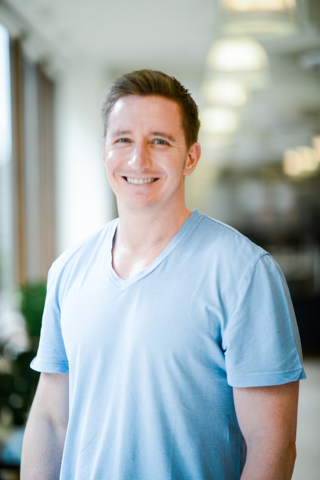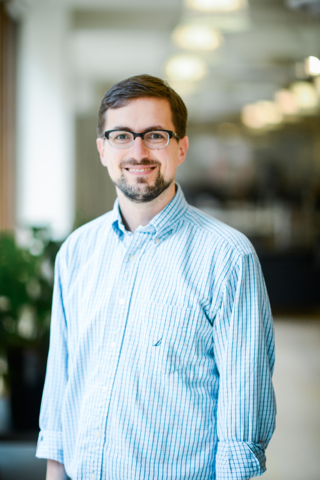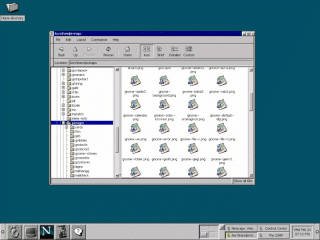
GIMP is a free and open-source raster graphics editor used for image manipulation (retouching) and image editing, free-form drawing, transcoding between different image file formats, and more specialized tasks. It is not designed to be used for drawing, though some artists and creators have used it for such.

CinePaint is a free and open source computer program for painting and retouching bitmap frames of films. It is a fork of version 1.0.4 of the GNU Image Manipulation Program (GIMP). It enjoyed some success as one of the earliest open source tools developed for feature motion picture visual effects and animation work. The main reason for this adoption over mainline GIMP was its support for high bit depths which can be required for film work. The mainline GIMP project later added high bit depths in GIMP 2.9.2, released November 2015. It is free software under the GPL-2.0-or-later. In 2018, a post titled "CinePaint 2.0 Making Progress" announced progress, but version 2.0 has not been released as of 2022.
Source-available software is software released through a source code distribution model that includes arrangements where the source can be viewed, and in some cases modified, but without necessarily meeting the criteria to be called open-source. The licenses associated with the offerings range from allowing code to be viewed for reference to allowing code to be modified and redistributed for both commercial and non-commercial purposes.
XCF, short for eXperimental Computing Facility, is the native image format of the GIMP image-editing program. It saves all of the data the program handles related to the image, including, among others, each layer, the current selection, channels, transparency, paths and guides.

Peter Mattis is an American computer programmer, entrepreneur, and business executive. He is the CTO and co-founder for Cockroach Labs, a company he co-founded in 2014. His work as a programmer includes launching GNU Image Manipulation Program (GIMP) while still in college, and assisting the source code development of CockroachDB, the namesake software of Cockroach Labs.
Gene Kan was a British-born Chinese American peer-to-peer file-sharing programmer who was among the first programmers to produce an open-source version of the file-sharing application that implemented the Gnutella protocol. Kan worked together with Spencer Kimball on the program called "gnubile" licensed under the GNU General Public License. Kan graduated from the University of California, Berkeley in 1997 with a major in electrical engineering and computer science, and was a member of the student club the eXperimental Computing Facility (XCF).
Raster graphics editors can be compared by many variables, including availability.
Founded in 1986, the eXperimental Computing Facility (XCF) is an undergraduate computing-interest organization at University of California, Berkeley. The "Experimental" description was given in contrast to the Open Computing Facility and the Computer Science Undergraduate Association, which support most of the general-interest computing desires of the campus. As such, the XCF stands as a focus for a small group of computer-scientists uniquely interested in computer science.

GIMPshop was a modification of the free and open source graphics program GNU Image Manipulation Program (GIMP), with the intent to imitate the look and feel of Adobe Photoshop.

Seashore is a free and open-source image editor for macOS, similar to Photoshop/GIMP, with a simpler Cocoa user interface. Seashore uses GIMP's native file format, XCF, and has support for a handful of other graphics file formats, including full support for TIFF, PNG, JPEG, JPEG2000, and HEIC and read-only support for BMP, PDF, SVG and GIF. Seashore offers fewer features than Photoshop/GIMP, but is intended to be easy-to-use and to run natively on macOS. It includes layers and alpha channel support, gradients and transparency effects, anti-aliased brushes, tablet support and plug-in filters.

The Linux Foundation (LF) is a non-profit technology consortium founded in 2000 as a merger between Open Source Development Labs and the Free Standards Group to standardize Linux, support its growth, and promote its commercial adoption. Additionally, it hosts and promotes the collaborative development of open source software projects.

sK1 is an open-source, cross-platform illustration program that seeks to be a substitute for professional proprietary software like CorelDRAW or Adobe Illustrator. Unique project features are CorelDRAW formats importers, tabbed multiple document interface, Cairo-based engine, and color management.

GTK is a free and open-source cross-platform widget toolkit for creating graphical user interfaces (GUIs). It is licensed under the terms of the GNU Lesser General Public License, allowing both free and proprietary software to use it. It is one of the most popular toolkits for the Wayland and X11 windowing systems.

The open-core model is a business model for the monetization of commercially produced open-source software. Coined by Andrew Lampitt in 2008, the open-core model primarily involves offering a "core" or feature-limited version of a software product as free and open-source software, while offering "commercial" versions or add-ons as proprietary software.

Desura was a digital distribution platform for the Microsoft Windows, Linux and OS X platforms. The service distributed games and related media online, with a primary focus on small independent game developers rather than larger companies. Desura contained automated game updates, community features, and developer resources. The client allowed users to create and distribute game mods as well.
Besides the Linux distributions designed for general-purpose use on desktops and servers, distributions may be specialized for different purposes including computer architecture support, embedded systems, stability, security, localization to a specific region or language, targeting of specific user groups, support for real-time applications, or commitment to a given desktop environment. Furthermore, some distributions deliberately include only free software. As of 2015, over four hundred Linux distributions are actively developed, with about a dozen distributions being most popular for general-purpose use.

CockroachDB is a commercial distributed SQL database management system developed by Cockroach Labs.

Ben Darnell is an American computer programmer, entrepreneur, and business executive. He is the chief technology officer for Cockroach Labs, a company he co-founded in 2015. Prior to his work at Cockroach Labs, he worked for tech companies that include FriendFeed, Facebook, Brizzly, Dropbox, Viewfinder, and Square, Inc.

GNOME 1 is the first major release of the GNOME desktop environment. Its primary goal was to provide a consistent user-friendly environment in conjunction with the X Window System. It was also a modern and free and open source software alternative to older desktop environments such as the Common Desktop Environment (CDE), but also to the K Desktop Environment (KDE). Each desktop environment was built-upon then proprietary-licensed widget toolkits, whereas GNOME's goal from the onset, was to be freely-licensed, and utilize the GTK toolkit instead.











